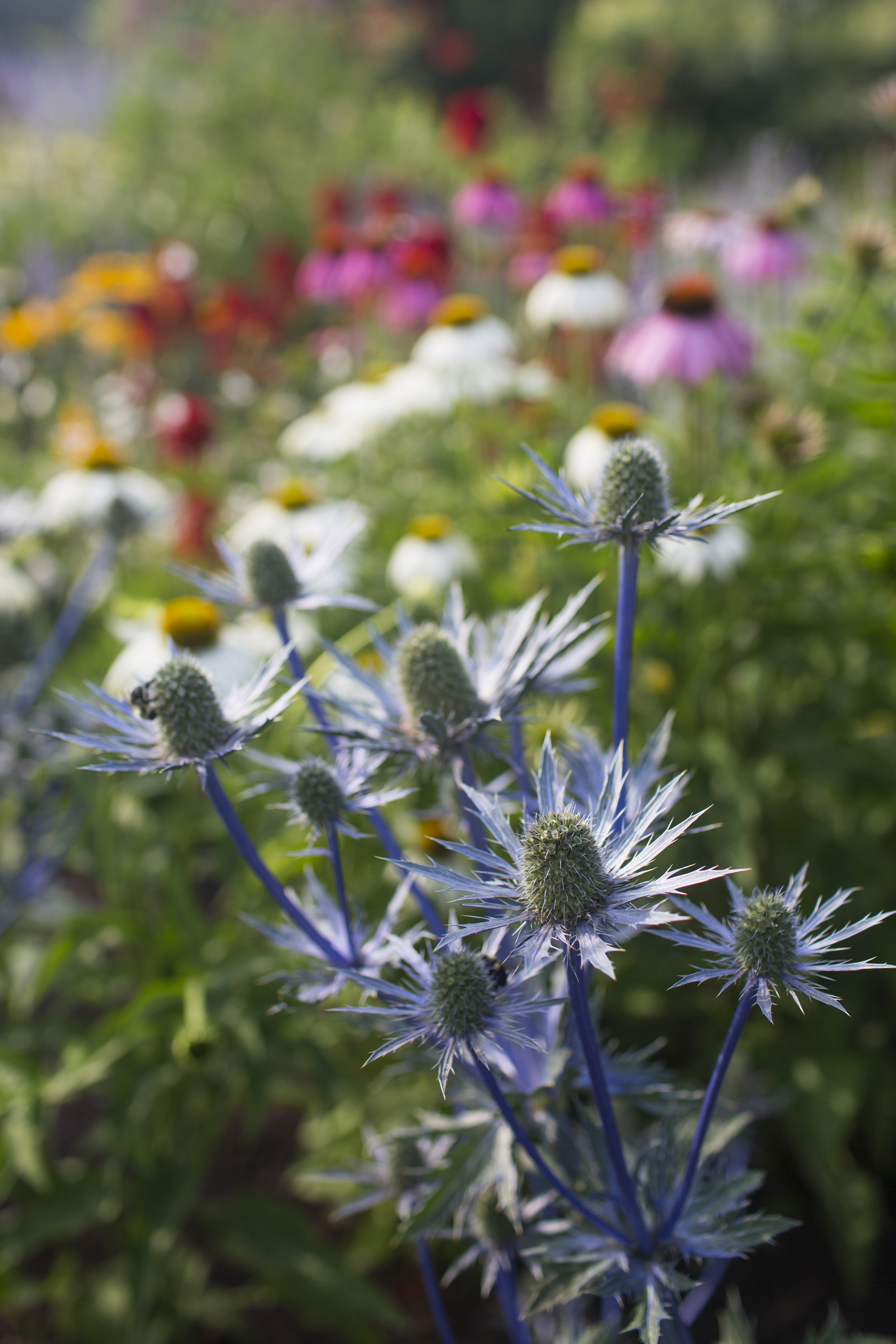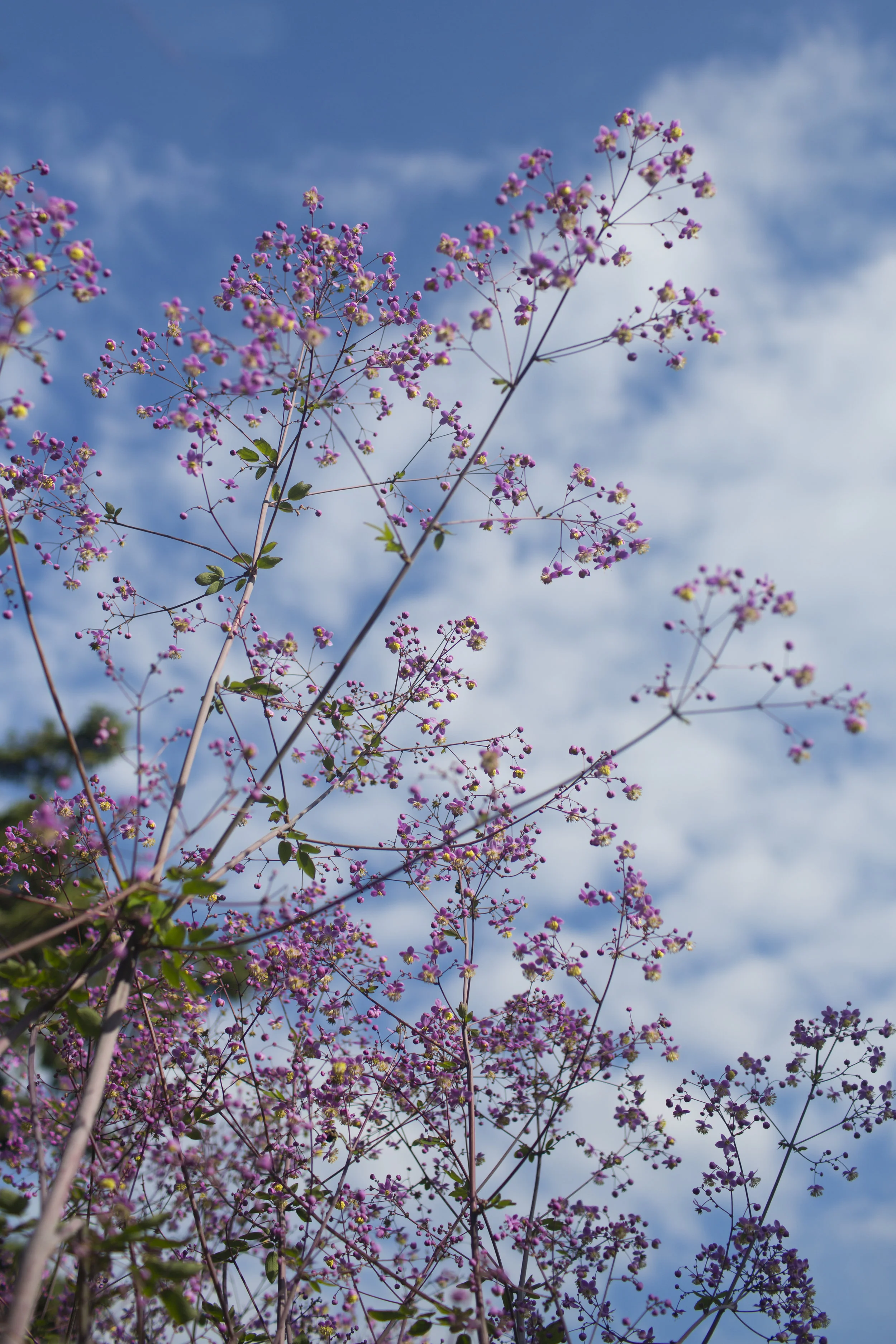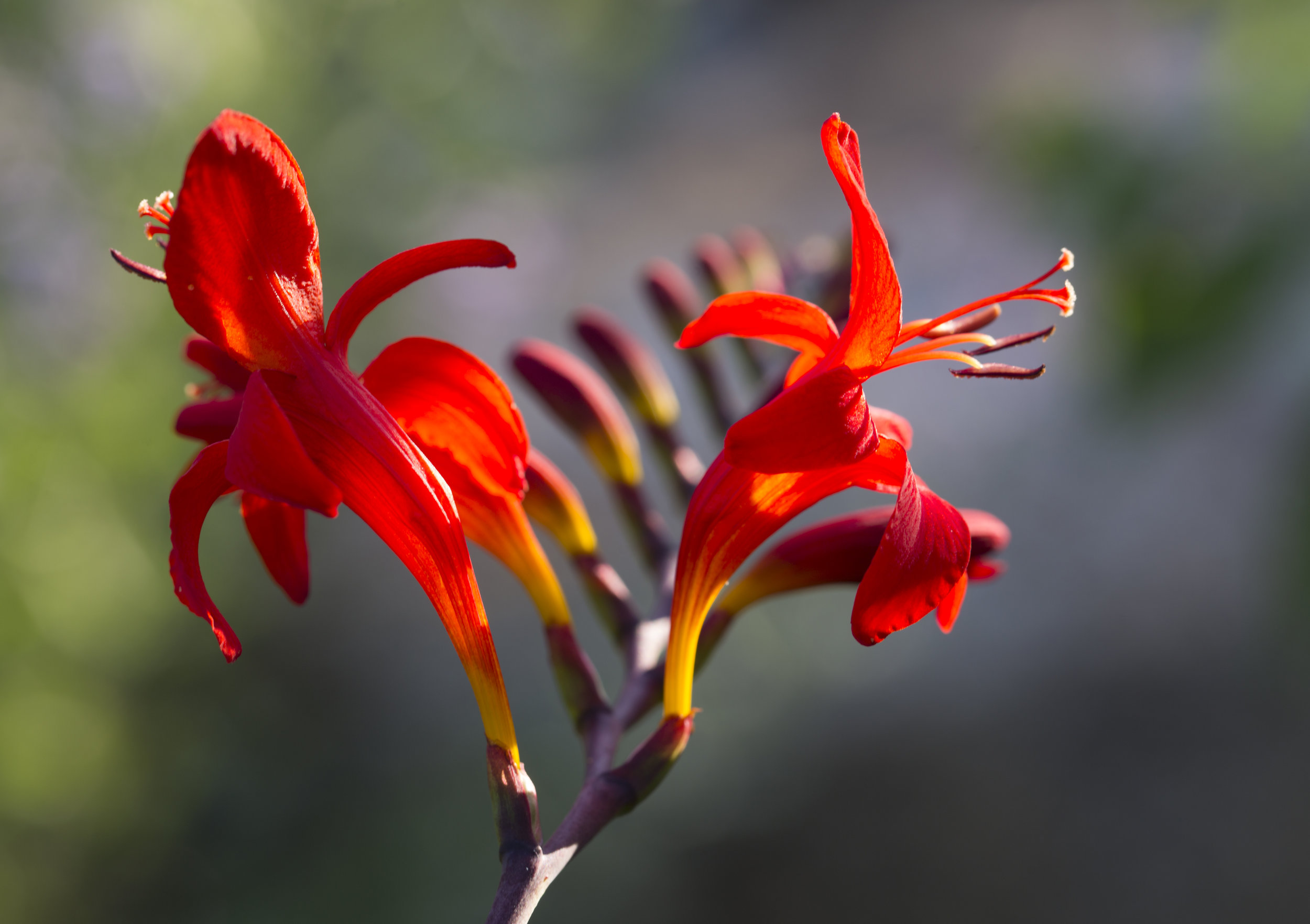Things to Love: Gardening, Part II
It’s over. Finished. All the months, weeks, days and hours of hard work preparing for the Georges River Land Trust Annual Garden Tour on July 15, 2018. The garden’s explosive profusion of growth mystified all of us. Yes, we know we added compost, yes we dug-in to make the garden spectacular, but it was almost as if all the plants, shrubs, flowers, were saying, “we got this,” shouting out in chorus, “READY, SET, GO.” The volunteers (the tour was a fund-raiser for the Trust) reported attendance of close to 500. One commented that the visitors seem to negotiate the mulched paths as if walking through a crowded exhibit!
The day began slightly overcast but the neutral, gray skies intensified the vibrant colors. While the garden overall was spectacular, there were a number of showstoppers: the Eryngium “Sapphire Blue,” with its spiky leaves and shocking neon-blue stems, sitting in sharp contrast to mop-headed Echinacea, “Cheyenne Spirit,” a blazing red, like a prairie on fire (photo); the Crocosmia, “Lucifer,” a brilliant red, comb-shaped flower gracefully sweeping over the mulched path (photo). And the willowy, lacey Thalictrum rochebruneanum, or Meadow Rue, a lavender mist towering above everything else in the upper terrace, was not outdone by the velvety, compact heads of the Angelica gigas. Originally found in Asia, the plant’s deep plum blossom and giant parsley-shaped leaves, has found a welcome home in Maine amid the natives.
The supporting cast, roses floribunda, salvia, hydrangeas (a Maine must-have), baptisia, monarda (bee-balm), lanky Russian sage, clumps of coreopsis, “Moonlight,” and a wonderful Veronica cultivar “Apollo,” all performed beautifully, stimulating conversation and curiosity much as plants did for American plant explorer, plant collector and self-taught botanist, John Bartram in the 18th century. You can read more about him and his unique contributions to American and European horticulture in Andrea Wulf’s book, The Brother Gardeners (Knopf, 2008). www.andreawulf.com Or better yet, you can visit Bartram’s Garden on the banks of the Schuylkill River in Philadelphia, www.bartramsgarden.org, where I once had the privilege of working as the Executive Director. Big sigh.
A few days after the event, I was back in my garden, dead-heading and pulling weeds. My neighbor, who all along appeared to be nonplussed by the labor and cash outlays, no doubt believing I was doing the tour for my own self-aggrandizement, signaled her disapproval by stopping and asking, “Are you still at it?” I smiled and responded with a wave of my trowel, “it never ends.” Indeed, life in the garden never gets to the point where you are finished because, as one of my favorite British writers, Penelope Lively (www.//pelopelively.co.uk) says in her book, Life in the Garden, (Knopf), “we garden for tomorrow and thereafter.”
In this wonderful bouquet of personal essays, we read about her passion for gardening and gardens, as well as their role in literature, art, landscapes (cultivated and not), history and fashion (formal versus wild; decorative versus practical). Gardens are thousands of years old and have been a source of inspiration to artists (think Monet and Giverny); and to writers, who employ them in novels to set the stage for high drama, love and sex (Madame Bovary, among others). But my favorite take-away was reading about Virginia Woolf. Lively shares a line from Woolf’s diary, when at the end of a day of gardening, she revels in “chocolate earth beneath the nail.”
I told Melina, the professional gardener who helps me, about this post and asked her if she had anything to add. Before she could respond I said that I had covered most everything in the garden except for what happens at the end, when plants die. It’s just too sad, I added. "Oh no", Melina responded. Plants don’t die, they just go to sleep. Maybe a garden is the great “thereafter.” Maybe that’s what I will do someday, just go to sleep beneath the ground among my dear plants and friends, with chocolate earth beneath the nail. But don’t worry. I’ll be back.
All photos by Sal Taylor Kidd.






